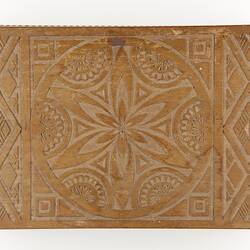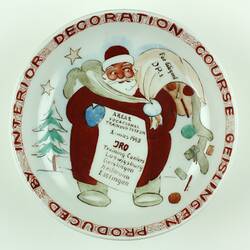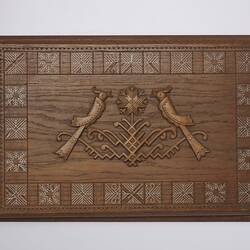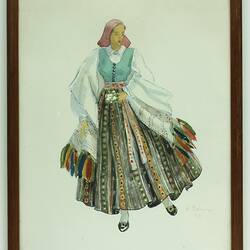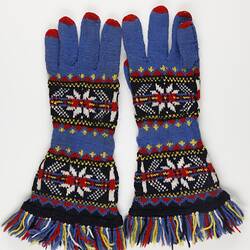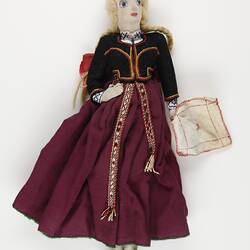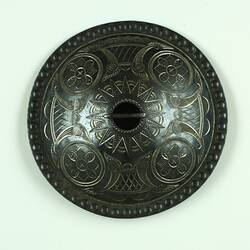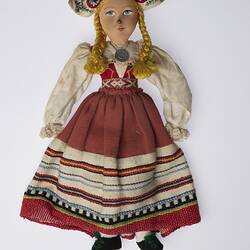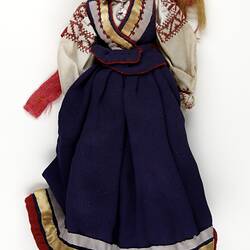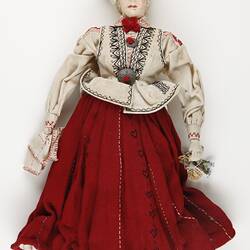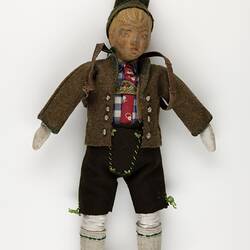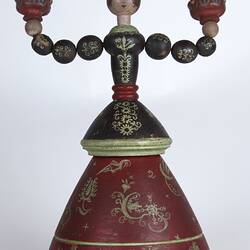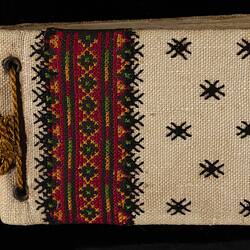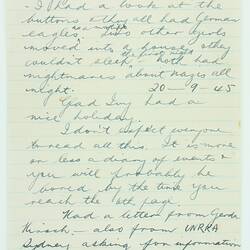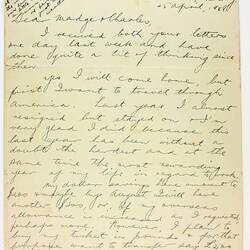Summary
Esma Banner worked for the UN in displaced persons camps in Germany after World War II.
Esma Mavis Banner was born on 28th July 1910 in Petersham, New South Wales. She had an older sister Ivy and two younger sisters, Marguerite and Isabel. When she was 14 years old Esma left school to look after her ill mother. When her mother recovered, Esma attended Business College for six months in 1926 before going on to work as a typist and shorthand writer for thirteen years. After the death of her mother in 1940 Esma returned home to help her father in his haulage business and during World War II she became a National Emergency Services ambulance driver. In 1944, Ivy asked to take on Esma's work in the family haulage business. Esma then applied for an overseas posting with the United Nations Relief and Rehabilitation Administration (UNRRA). Within a week, she was contacted by UNRRA with the urgent request to start work immediately as a secretary and typist in the Sydney office. Esma began working as a secretary at UNRRA in Sydney in early 1945. She was soon transferred to UNRRA's Melbourne office before being selected to work as a Secretary in the US Zone of Germany, later writing 'within a month, after many injections and an A1 rating from the Army, I was off' (Banner, Personal Letters, 1945-51).
Esma was one of only 39 Australians who worked for UNRRA at displaced persons camps in Germany after World War II (Holborn, 1956). Esma left for Germany on 28th June 1945, travelling with two other UNRRA employees via Adelaide, Perth, Sri Lanka, Egypt, England and France. The plane journey was long as they were frequently required to give up their seats for more important passengers. After fifteen days travelling, Esma spent a month in England where she purchased her uniform and attended briefing and training sessions. Esma then met her colleagues in Paris where she witnessed the VJ Day celebrations before transferring to Germany (Banner, Personal Letters, 1945-51).
Esma arrived in Germany in September 1945. Her first posting was as a Secretary at the organisation's office in Pasing, Munich. She held this position for one year before being promoted to the position of Administrative Assistant in the Health Division (Banner, Personal Documentation, 1945-51). UNRRA's Health Division was in part responsible for closely monitoring health and illness in the camps in an attempt to prevent, cure or contain possible epidemics (Reinisch, 2008). In these roles Esma was responsible for creating reports detailing the health of displaced persons, including information about disease, pregnancy, medical tests and hygiene. Esma continued in this role when UNRRA disbanded and the International Refugee Organization (IRO) took administrative responsibility of the camps in July 1947 (Banner, Personal Letters, 1945-51).
In October 1947, Esma moved to the IRO's Nelligen office where she took the position of Area 2 Employment Officer. As Employment Officer she organised the allocation and distribution of workers' rations and control of IRO Employment budgets. She also helped oversee in-camp training initiatives designed to provide employment and a source of income for the displaced persons (Banner, Personal Letters, 1945-51). These programs enabled the displaced persons to gain a wider skillset in order to improve the likelihood of their resettlement in Allied countries, including Australia (Markus, 1984). In July 1950 Esma transferred to the position of Area 7 Welfare Officer in Traunstein. In this position she worked closely with the displaced persons, including those who could not be resettled overseas (Banner, Personal Letters, 1945-51).
Esma demonstrated a keen interest in the art and craftwork produced by people in displaced persons camps. In 1949 Esma was on the selection board for an IRO Area 2 exhibition of arts and handicrafts that took place in Nelligen (Banner, Personal Letters, 1945-51). While working for the UN she acquired numerous artworks and craft objects, some of which she sent home as gifts with personalised inscriptions. During her time in Germany, Esma corresponded regularly by mail with her family back in New South Wales. In her letters she describes both her personal and professional experiences as a relief worker. A keen photographer, Esma also documented her experiences through the thousands of photographs and glass slides that she sent back to her family.
In 1950, her father and sister both became ill and Esma decided to leave Germany so she could help run the family business. She arrived in Sydney in March 1951 (Banner, Personal Letters, 1945-51). In recognition of her work at displaced persons camps Esma was awarded an IRO Service Medallion. She kept in contact with some of the Displaced Persons she met while working for UNRRA and the IRO, and her niece recalls some of them visiting Esma's home once they had resettled in Australia (Helen Fitzgerald, Personal Communication July 2012). After her father's death, Esma was able to undertake tertiary training and completed a Diploma of Social Work at the University of Sydney. She then worked for the Social Security Department for 18 years until she retired (Banner, Personal Letter, 1991). After her sister Ivy died, Esma moved in with her younger sister Marguerite until moving into an Aged Care Facility. She died in 2001 (Helen Fitzgerald, Personal Communication July 2012).
Esma Banner was a capable and highly intelligent person; interested in the arts, literature and photography, with a love of nature and travel. She had a deep sense of duty to her family, at times sacrificing her own aspirations and career ambitions to take care of family matters. Esma carried this sense of responsibility in her professional life; her ability to deal with the extremely disordered environment of post-war Germany was demonstrated by her promotions within UNRRA and the IRO. Items in the Esma Banner Collection and associated research reveal a curious individual, engaged with the wider global and political implications of her relief and resettlement work with displaced persons (Banner, Personal Letters, 1945-51).
References
Holborn, L. W. 1956, The International Refugee Organization: a specialized agency of the United Nations: its history and work, 1946-1952, Oxford University Press, London.
International Refugee Organization, n.d. Medal in Testimony of Service, International Refugee Organziation, U. S. Zone, Germany, 1947 - 1950, held at National Archives of Australia, Sydney.
Markus, A. 1984, Labour and Immigration 1946-9: The Displaced Persons Program, Labour History, No. 47, pp. 73-90.
Reinisch, J. 2008, Introduction: Relief in the Aftermath of War, Journal of Contemporary History, Vol. 43, No. 3, pp. 371-404.
More Information
-
Keywords
-
Authors
-
Article types

